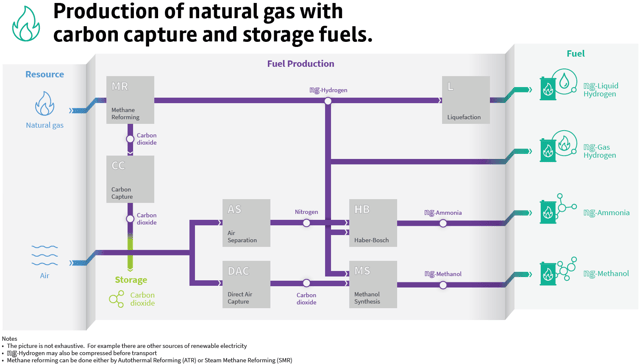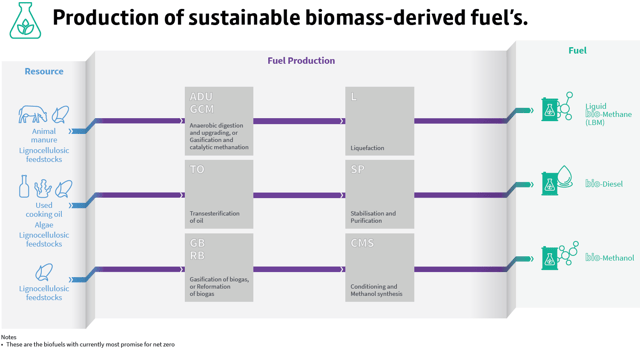How we assess solution readiness.
Solution readiness assesses zero carbon shipping fuels against three metrics: technology readiness, investment readiness and community readiness.
Assessment method
Marine Solution Readiness Level (MSRL) assesses zero-carbon fuels against three scales: technology readiness (TRL), investment readiness (IRL) and community readiness (CRL). For each fuel and for each stage of the supply chain, LRQA's experts assess TRL, IRL and CRL based on the currently available evidence and the expert judgements of our industry specialists.
We hope publishing the results will encourage feedback and contributions from industry stakeholders. These will help identify initiatives to advance solution readiness and refine the assessments over time.
Technology readiness level
The technology readiness level indicates the maturity of a solution within the research spectrum from the conceptual stage to being marine application-ready. It is based on the established model used by NASA1 and other agencies and institutes, using a 9-level scale.
| TRL | LEVEL | LEVEL DESCRIPTION |
| Idea | 1 | Basic principle observed |
| Concept | 2 | Technology concept formulated |
| Feasibility | 3 | First assessment feasibility concept & technologies |
| Validation | 4 | Validation of integrated prototype in test environment |
| Prototype | 5 | Testing prototype in user environment |
| Product | 6 | Pre-production product |
| Pilot | 7 | Low scale pilot production demonstrated |
| Market introduction | 8 | Manufacturing fully tested, validated and qualified |
| Market growth | 9 | Production & product fully operational |
Investment readiness level
The investment readiness level indicates the commercial maturity of a marine solution on the spectrum from initial business idea through to reliable financial investment. It addresses all the parameters required for commercial success, based on work by the Australian Renewable Energy Agency (ARENA)2 . The 6-level scale used summarises the commercial status of the solution and is determined by the available evidence in the market.
| IRL | LEVEL | LEVEL DESCRIPTION |
| Idea | 1 | Hypothetical commercial proposition |
| Trial | 2 | Commercial trial, small scale |
| Scale up | 3 | Commercial scale up |
| Adoption | 4 | Multiple commercial applications |
| Growth | 5 | Market competition driving widespread development |
| Bankable asset | 6 | Bankable asset class |
At each level the assessment is made across several indicators that are key for successful commercialisation:
- Technical performance
- Financial proposition – costs
- Financial proposition – revenue
- Industry supply chain and skills
- Market opportunities
- Company maturity
Community readiness level
The community readiness level indicates the societal maturity of a marine solution in terms of acceptability and adoption by both people and organisations. It is gauged on the spectrum from societal challenge through to widespread adoption. CRL is based on the work by ARENA2 and Innovation Fund Denmark3 adapted to a 6-level scale.
| CRL | LEVEL | LEVEL DESCRIPTION |
| Challenge | 1 | Identifying problem and identifying societal readiness formulation of problem, proposed solution(s) and potential impact, expected societal readiness; identifying relevant stakeholders for the project |
| Testing | 2 | Initial testing of proposed solution(s) together with relevant stakeholders |
| Validation | 3 | Proposed solution(s) validated, now by relevant stakeholders in the area |
| Piloting | 4 | Solution(s) demonstrated in relevant environment and in co‐operation with relevant stakeholders to gain initial feedback on potential impact |
| Planning | 5 | Proposed solution(s) as well as a plan for societal adaptation complete and qualified |
| Proven solution | 6 | Actual project solution(s) proven in relevant environment |
At each level the assessment is made across several indicators that are key for successful adoption:
- Regulatory (safety)
- Regulatory (environment)
- Community acceptance
- Sustainability (LCA)
- Sustainability (Environment)
- Sustainability (Social-economic)
Supply chain
The assessment is carried out for a selection of the most promising zero-carbon fuels across the entire fuel supply chain from resource through to vessel propulsion.
Whilst MSRL assesses each area of the supply chain separately, some assessments are carried out at the onboard ship level, comprising the fuel storage and handling and propulsion areas combined.
The marine fuel supply chain.

Fuel production
Zero carbon fuels can be produced in a range of different ways. LRQA has applied MSRL to fuels in three main categories of the production process, illustrated in the diagrams.
re-Electrofuels: Fuels are produced from sustainable natural resources that use hydrogen as a carrier or as the final output.
Natural gas with carbon capture: Fuels that are produced from natural gas with CCS to produce low carbon hydrogen as a carrier or as the final output.
Sustainable biomass-derived fuels: Fuels which aim to be net zero by releasing an amount of carbon dioxide equivalent to that captured in the creation of the biomass resource material.



Further development
This is a pilot version of MSRL, available to a limited audience for testing and feedback. We appreciate all comments and suggestions that help develop the concept increasing its impact in achieving zero carbon shipping by 2050.